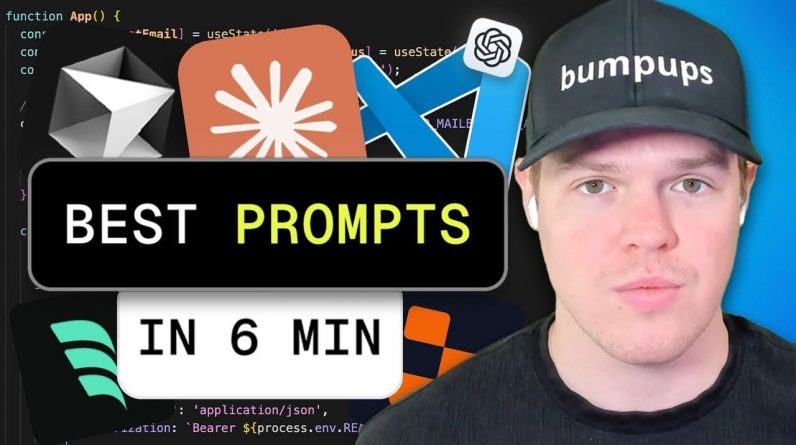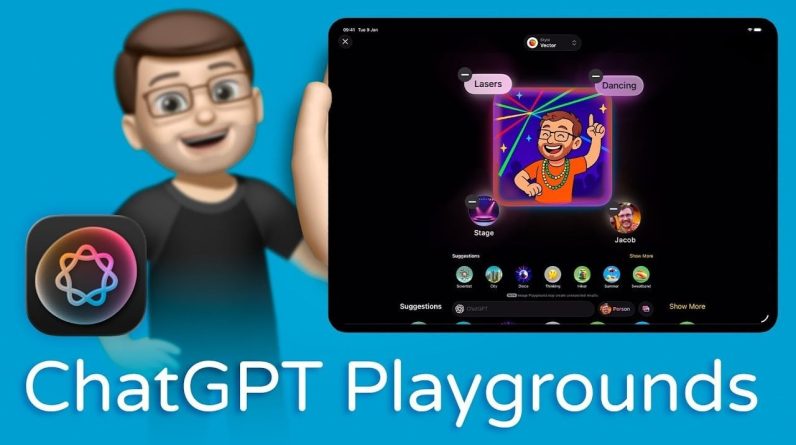
Struggling to get the most out of AI tools like ChatGPT or Claude for your coding projects? You’re not alone. Many beginners dive into these powerful platforms expecting magic, only to end up with fragmented code or confusing outputs. The truth is, the quality of your results often hinges on how well you communicate with the AI. Crafting the right prompts can mean the difference between a seamless coding experience and hours of frustration. If you’ve ever wondered how to structure your interactions with AI to actually get useful, context-aware code, this guide by Corbin Brown is here to help.
In this tutorial, Corbin Brown breaks down three essential AI coding prompts that every beginner should know. You’ll learn how to provide the right context, request full file outputs, and even integrate external API documentation into your prompts for more precise results. Along the way, you’ll pick up bonus tips to optimize your workflow and avoid common pitfalls, making sure you get the most value out of your AI tools. Whether you’re building your first app or troubleshooting a tricky bug, this guide will equip you with practical strategies to make AI your coding sidekick—not just a tool you struggle to understand.
Understanding AI Models
TL;DR Key Takeaways :
- Understand the strengths and limitations of AI models like ChatGPT and Claude to align them with your project goals effectively.
- Use “Contextual Code Loading” by sharing the full codebase or relevant sections to improve AI output accuracy and reduce misaligned suggestions.
- Request “Full File Outputs” instead of fragmented code snippets to simplify integration, minimize errors, and save time during development.
- Use external API documentation in prompts to ensure precise and contextually accurate AI-generated code for API-related tasks.
- Optimize your workflow with strategies like starting fresh sessions, using custom instructions, and refining prompts for better results.
Before diving into specific prompts, it’s essential to understand the strengths and limitations of AI models. Tools like ChatGPT and Claude are designed to assist with coding tasks, but their effectiveness depends heavily on how you use them. Each model has unique capabilities that can be used for different aspects of coding:
- ChatGPT: Known for generating detailed code snippets and offering clear explanations of programming concepts, making it ideal for learning and debugging.
- Claude: Excels at providing broader contextual understanding, which is particularly useful for high-level problem-solving and complex workflows.
Your choice of model should align with your specific project requirements, whether you’re building software, designing a website, or integrating APIs. Experimenting with different tools will help you identify the one that best suits your needs and coding style.
Prompt 1: Contextual Code Loading
Providing the AI with comprehensive context about your project is one of the most effective ways to enhance its output. Instead of requesting isolated code snippets, share the entire codebase or relevant sections to give the AI a clearer understanding of your project. This approach reduces the likelihood of misaligned suggestions and ensures the generated code integrates seamlessly with your existing work.
For example, if you’re working with Python, JavaScript, or CSS, you can start with a prompt like:
*”Here is the current state of my project. Can you help me improve this code?”*
This establishes a clear starting point for the interaction. If your codebase evolves during the process, reload the updated files to ensure the AI remains aligned with your current requirements. Additionally, resetting the context periodically can help maintain accuracy and relevance in the AI’s responses.
Top 3 AI Coding Prompts For Beginners
Unlock more potential in AI coding prompts by reading previous articles we have written.
Prompt 2: Full File Outputs
Beginners often find fragmented code outputs challenging to piece together, which can lead to confusion and errors. To address this, ask the AI to generate complete files rather than individual code blocks. This approach simplifies the integration process and makes it easier to test and implement the AI-generated code in your development environment.
For instance, you might use prompts like:
*”Can you generate the full `.js` file for this functionality?”*
or
*”Provide the complete `.css` file for this design layout.”*
By focusing on full file outputs, you save time and reduce the risk of introducing errors during manual assembly. This strategy is particularly useful when working on larger projects or collaborating with team members.
Prompt 3: Using External API Documentation
When working with APIs, precision and clarity are critical. To ensure the AI provides accurate and actionable guidance, include relevant sections of the API documentation in your prompt. This allows the AI to generate code that aligns with the specific requirements of the API, reducing the likelihood of errors.
A sample prompt might look like this:
*”Using the following API documentation, can you create a Python script to fetch user data and handle authentication?”*
By supplying detailed input, such as endpoint URLs, parameters, and authentication methods, you enable the AI to produce contextually accurate results. This approach is particularly valuable when integrating third-party services or building applications that rely on external data sources.
Bonus Tips for Workflow Optimization
To further enhance your AI-assisted coding experience, consider implementing these additional strategies:
- Start fresh: Begin a new chat session whenever your codebase undergoes significant changes. This ensures the AI does not rely on outdated context, improving the relevance of its responses.
- Use custom instructions: Provide the AI with specific details about your project, such as the programming language, framework, or target platform. This minimizes assumptions and improves the quality of the generated code.
- Iterate on your prompts: Regularly refine and adjust your prompts to ensure they are clear, concise, and aligned with your goals. This iterative approach helps you achieve better results over time.
By combining these strategies with the three outlined prompts, you can create a more efficient and productive coding workflow. Whether you’re debugging, designing, or building from scratch, these techniques will help you make the most of AI tools and improve your overall development experience.
Media Credit: Corbin Brown
Filed Under: AI, Guides
Latest Geeky Gadgets Deals
If you buy something through one of these links, Geeky Gadgets may earn an affiliate commission. Learn about our Disclosure Policy.
Originally Appeared Here






